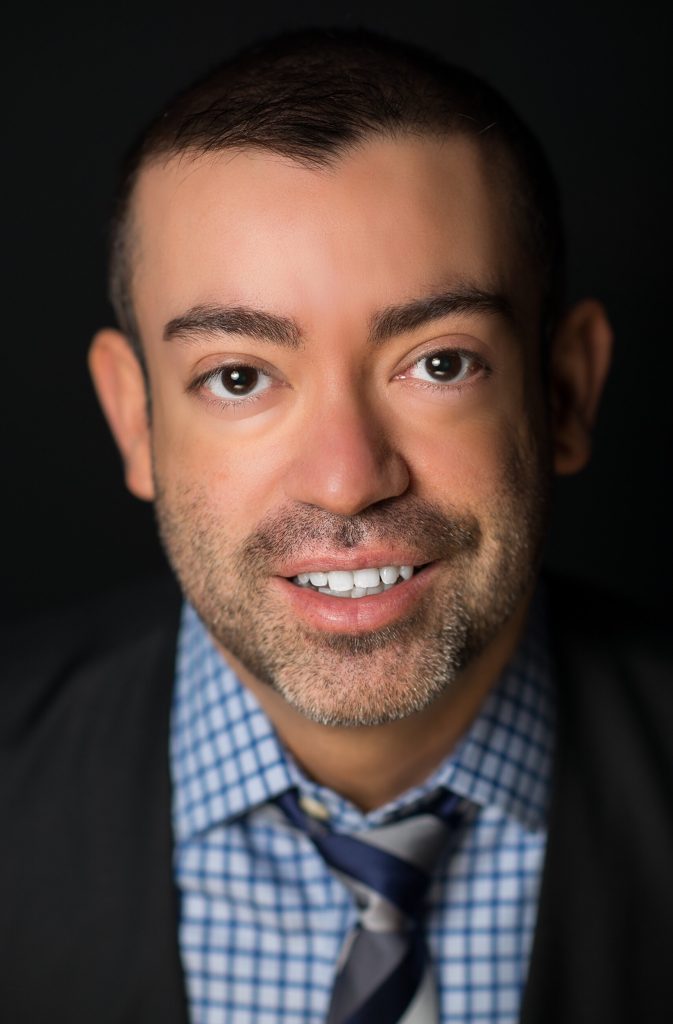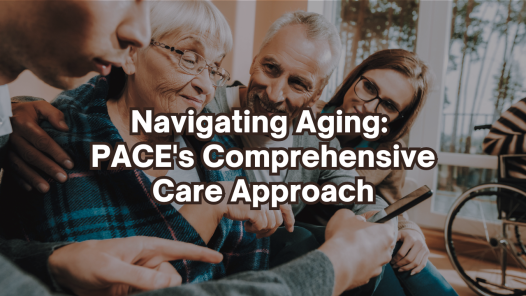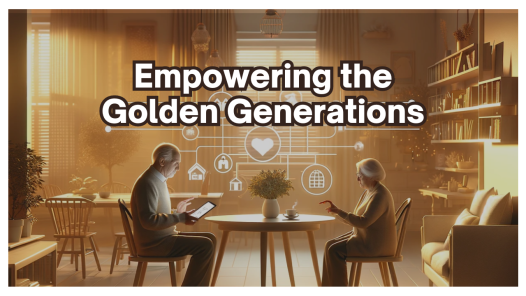
Robert Espinoza works to strengthen the direct care workforce; in his role at Phi, he is the vice president of policy, overseeing research and public education. We talk about how he got interested in aging and long-term care from his own experience of watching his parents age. He tells about who direct care workers are and the essentials they play in elder care facilities. Robert and I discuss the high turnover rates associated with direct care workers, and he provides some ways to mitigate this. We finish by speculating what the direct care workforce will look like 20 years into the future.
Hanh Brown: [00:00:00] . Robert. Thank you so much for being here on boomer living.
Robert Espinoza: [00:01:39] Thank you for having me on, I look forward to our conversation.
Hanh Brown: [00:01:43] Let’s start by having you share with our audience a little bit about yourself. Where are you from and what projects are you working on right now?
Robert Espinoza: [00:01:50] Sure. So I work for Phi. We are a national organization focused on strengthening the direct care workforce and I’m the vice president of policy. So I oversee our policy, our research.
[00:02:03] And our public education division. Some of the projects that Phi is working on right now include a report series on the direct care workforce. It’s called caring for the future, and it describes the variety of challenges facing this workforce and the sector and everything that policy leaders and providers can do to really transform this job. [00:02:24] We also have state advocacy initiatives. In North Carolina and Michigan and in New Mexico. And we recently released a report on new Jersey’s direct care workforce. So we’re seeing a lot of excitement and energy in States around the country to strengthen the sector. Personally, I’m from Southern Colorado. [00:02:40] I’m from a city called Pablo and I moved to New York probably about 20 years ago and upstate inner sense.Hanh Brown: [00:02:47] Can you please tell the listener what that stands for a Phi?
Robert Espinoza: [00:02:50] Sure. So Phi used to stand for paraprofessional healthcare institutes, but the word paraprofessional is outdated. It’s not a term that many workers align themselves with.
[00:03:00] And so we rebranded to just go by Phi, but in essence, we’re still an organization. That’s about strengthening the director. Thank you.Hanh Brown: [00:03:09] So now, how did you become involved in the aging services field?
Robert Espinoza: [00:03:13] It’s a good question. Um, so about 10 years ago, my parents were in their early seventies. Um, and I was noticing the challenges that come with aging and not having enough of a system of support.
[00:03:25] I was noticing financial questions. They were dealing with affordability issues. Uh, complexity and accessing services, or even qualifying and applying for Medicaid. And my parents are also both Latino and my mother is limited in her English proficiency. Um, and so there are a variety of equity and cultural competence questions that emerged. [00:03:46] I became more interested in aging and longterm care. Um, and I wanted to know what I could do or how can my career. Shift in that direction. And what could I do to really transform the lives of older adults and their supports as well?Hanh Brown: [00:04:01] So this work has personal meaning to you. And thank you for sharing that.
Robert Espinoza: [00:04:05] I think for most people, I noticed that their interest in workforce and older it’s all issues is typically a personal question. I think they it’s either somebody, they, they love begins needing access to aging services and long-term care supports, or they themselves need that support. And for me, that awareness really served as an entry.
Hanh Brown: [00:04:24] Great. Now who are the direct care workers and why are they important to the lives and health? Of older Americans.
Robert Espinoza: [00:04:31] It’s a great question. By definition, direct care workers assist older adults and people with disabilities with a variety of daily tasks, such as dressing, bathing, and eating some direct care workers, help their clients with housekeeping, and they might assist them with errands appointments and social engagements outside of the home health aides and nursing assistants, which are.
[00:04:52] Part of the direct care workforce also perform some clinical tasks, such as blood pressure, readings, and assistance with range of motion exercises. Our research shows that there are about 4.6 million direct care workers, and they’re working in private homes in nursing homes and an array of residential care settings like assisted living. [00:05:11] In fact, this workforce is now larger than any single occupation in the U S. So you wouldn’t know that given how these jobs are often not high enough in quality and they don’t reflect their value, I would say they’re important for older adults because they allow them to live in age with dignity and independence and the setting of their choice and many older adults wouldn’t make it through the day without direct coworkers.Hanh Brown: [00:05:33] Absolutely. So what role does employee turnover play in this industry? How do you ensure employee turnover stays low?
Robert Espinoza: [00:05:43] It’s unfortunately, a major problem in the sector. There isn’t a lot of good data on turnover and the direct care workforce. And what we know is that from the studies that we encounter, that turnover can range hover around 60 to 80%.
[00:05:57] And often within the first 90 days. So many workers are choosing to leave these roles or leading these roles typically for other sectors. And what it’s done is it’s created an enormous. Need, especially in the years ahead. So our research estimates that between 2018 and 2028, the long-term care sector will need to fill about 8.2 million job openings in direct care. [00:06:21] Turnover is a major challenge for sure. This sector, there isn’t a lot of good data on turnover among direct care workers. What we know is that studies tend to estimate it around 70, 60 to 80% among direct care workers and many workers leave these jobs within the first 90 days. What we know is that because of growing demand, because of turnover, the long-term care sector will need to fill about 8.2 million jobs in direct care between 2018 and 2028. [00:06:51] And this is a credible problem, right? How will employers and providers have enough workers to meet demand? Given the growing numbers of older adults that are encountered in all their settings? I think what we need to think about when you think about solutions for turnover, we need to think about all the reasons these workers leave. [00:07:09] These jobs. They leave because they aren’t compensated enough. They leave because training isn’t strong enough because there aren’t a career paths. They leave because of supervisors. Many director workers will report that their supervisors are their main reason why they leave these jobs and all of these dimensions of job quality. [00:07:27] Needs to be transformed. It can be transformed at the government level or they can be transformed by employers as well.Hanh Brown: [00:07:33] Absolutely. I think the folks that you want to cultivate in the team culture includes the caregivers and if they don’t have a sense of. Cultivation that the employer cares about their career growth, their education, their family, all of that is so important to everybody.
[00:07:53] It’s important for you. It’s important for me. And if you’re working for an employer that supports that, then you’re more inclined to wanting to show up for work. I know that it is ongoing problem even before COVID is going to magnify. We have to come up with solutions, like you said, better provide for them education, career path, better pay.Robert Espinoza: [00:08:14] That’s right. I think all of the challenges that we have seen during COVID 19 per day, really the virus depend Dominic, the challenges with poor compensation or limited training, all of which became amplified during the COVID 19 crisis. They all pre-dated and they will outlive the COVID 19 crisis. Unless we, as a sector, we as a country, better invest in these jobs.
Hanh Brown: [00:08:39] I agree. So COVID-19 has obviously impacted pretty much every sector in the business. What effect has it had on the aging services industry specifically, you know, and aging services?
Robert Espinoza: [00:08:50] I think given that the disproportionate impact of COVID-19 has been on. Older adults, specifically older adults with underlying conditions and people of color who are older.
[00:09:04] I think it’s had a tremendous impact. We focus primarily on the direct care workforce and the long-term care sector. And what we saw from the very beginning where that was that direct care workers were on the front line. Of this crisis. They were of course, supporting older adults and people with disabilities in their homes, in nursing homes where the COVID 19 crisis has really ravaged the lives of older residents and their workers and in assisted living facilities yet they were often doing this without proper PPE, without enough supplies without testing. [00:09:36] And we’ll see if this happens again with vaccines, once they’re introduced, we also saw that many direct co-workers because they weren’t. Guaranteed that they could be protected and they weren’t properly compensated about $12 an hour. Many workers left the sector. So a recent study estimated that the number of direct care workers dropped by about 280,000 workers during the first three months of the crisis. [00:10:01] And most of those were in home care. Essentially workers were saying, we are not. Willing to risk our lives for $12 an hour. If we can’t be guarantee safety measures. And the data that we’ve seen on this sector has shown that, you know, about 318,000 nursing home staff have suspected or diagnosed cases of COVID-19 and approximately 900 have died that’s as, as admitted September, um, there are comparable figures on home care workers, but we can imagine it’s probably had a similar impact.Hanh Brown: [00:10:29] I’m glad to have this opportunity to bring this to light. So you recently wrote a new report on the direct care workforce that outlines five areas and 28 key strategies for improving jobs in this sector. So what do you see as the biggest challenges the sector is facing? And can you go through the report?
Robert Espinoza: [00:10:48] Yes, absolutely. So the report is called, would you stay rethinking direct care, job quality? And it takes a look at the direct care workforce and the long standing challenges in job quality that have shaped this workforce. It also looks at the impact of COVID-19. And it introduces our new framework at Phi, which we’re calling the five pillars of direct care job quality.
[00:11:10] The five pillars are quality training quality jobs should ensure that all workers acquire the skills, the knowledge and the confidence to succeed in their roles. And when key element of this pillar is for example, designing competency based adult learner centered instruction with hands-on learning. [00:11:26] These roles require that level of instruction. A second pillar is fair. Compensation workers should be able to achieve economic stability and they should be able to plan for their future. Like all of us among other elements, this includes providing a living wage as a base wage and also access to full-time hours. [00:11:43] Many workers don’t have access to full-time hours and that’s that creates an a poverty level conditions. The third pillar is quality supervision and support. That really honors their expertise, their contributions, and their diverse life experiences. And here we argue for the importance of centering direct coworkers in an organization’s mission, their values and their business clients. [00:12:06] And the fifth is real opportunity. How do we invest in workers learning development? And career advancement opportunities. And a key element here is making sure that workers have access to career paths where they can increase their responsibilities, their wages, and their titles also improve and are commensurate with their level of experience. [00:12:25] By the way, these five pillars are met primarily in the report for employers, but they should also inform public policy and they should inform all of our everyday decisions.Hanh Brown: [00:12:34] This is very good for employers, whether it’s senior living home care. It ought to become part of the discussion for the policy makers.
[00:12:42] So where can people find more about your report? How do they access that?Robert Espinoza: [00:12:48] Absolutely. Our, all of our information in that report are on our website, which is P H I national dot orgy.
Hanh Brown: [00:12:56] Now, while you’ve mentioned some of the problems, this industry faces every day, I wonder what gives you hope about the future of this sector?
Robert Espinoza: [00:13:06] It’s great question. I think what gives me hope or a few things. One is I’m inspired by policymakers in States all around the country, and even at the federal level who are beginning to gradually propose new laws and policies that improve compensation, that strengthened training that provided career paths, that’s trends in the data and the financing around this workforce.
[00:13:29] It gives us a sense that. Governments are waking up to the reality that these workers are important, but their jobs don’t reflect that importance. We’re also seeing a lot of innovation coming from the private sector, as we all grow up with these questions. And I think they will play a critical role in making sure that these jobs are strong and that they’re optimized. [00:13:48] I think for older adults, one of the most promising developments for me has been in regard to social insurance programs and long-term care in 2019. Uh, Washington state created the nation’s first public state operated long-term care insurance program, where they pay benefits up to $36,000 for people who need assistance with regular Jayme activities. [00:14:09] And we need those kinds of programs and public investment in long-term care that will make it more affordable for all of us to access long-term care and not require us to go into poverty, to qualify for Medicaid. Also, these programs should create. Good jobs for workers, but it’s a promising development.Hanh Brown: [00:14:26] Wonderful. So what do you see? Let’s say 10 or 20 years from now. What is your longterm hope or expectation or maybe impact that you and your company are aspiring to achieve?
Robert Espinoza: [00:14:37] Sure, I think in 20 years, I hope that we, we have expanded access to home and community-based services to as many people who it for regardless of what level of care you need it for.
[00:14:49] I think expanding that serve those services and supports is really what most people want. Most people report wanting to age in their homes and communities. And I hope that 20 years from now that’s a reality. I hope that we create more equity. For people at both as older adults, but also as workers and in a workforce that’s primarily women and people of color. [00:15:09] And increasingly immigrants equity looks what looks in a very specific way. And how do we make sure that our access to supports are equitable regardless of who we are. Um, and the final piece is I hope that direct care jobs by that point are in fact high in quality that they have. Fair compensation and quality training that they’re respected and recognized and properly supervised, and that there are real opportunities for their learning, for their development and for their career.Hanh Brown: [00:15:35] Very true. If there’s anything. That’s positive that came out of this is uncovering the problem that already existed and bringing it to light and amplifying it so that we have more policymakers and supportive caregivers across the board. That’s right. Yeah. So now have you given thought to your own aging journey and how would you like to grow old?
Robert Espinoza: [00:15:57] Yeah, it’s a great question. I have given thought. I mean, I think working in this sector opens your eyes to the kinds of goals that you might have as an older person. And I’ve had that in the last 10 years. I absolutely prefer to age in my home and in my community, my personal settings are important to me and my community has the resources that I want and that I need.
[00:16:18] And currently I live in Brooklyn, New York, where, um, I feel just a very strong affinity for everything that I’m doing on a personal level. To plan for my aging is about that reality. I also want to age supported by friends and by families. I don’t want to be isolated or lonely. And those two phenomena, social isolation and loneliness are a profound problem for older adults in this country. [00:16:41] And we need to take measures ourselves as well to make sure that we have the kind of community supports and that we have strong friends and families, and that we’re taking care of our mental health, that we don’t feel lonely. I keep an eye towards that as well.Hanh Brown: [00:16:55] I’m so thankful of technology in the midst of the pandemic, because it allows us to have this conversation and be engaged and stay connected with family.
[00:17:04] But I also think we need to get back to that physical human touch. And one-on-one being at the table having a meal with your mom, because you don’t know, depending on the acuity level, it’s not about words. It’s not about conversation. It’s about disposition and presence, loneliness, isolation. That was a problem before COVID and now it’s amplify. [00:17:29] And I’m hopeful that folks like you and many who are impactful in serving older adults find ways solutions to not only to engage them through technology, but just more meaningful relationship. Purposeful activities to allow them to continue to thrive.Robert Espinoza: [00:17:48] That’s right. It’s also in the setting of your choice, right?
[00:17:53] I think that older adults, all of us should be able to choose where we want to live in age and thrive. And that requires in many cases, well supported, properly compensated workers. So I, I see that as part of my aging journey as well, making sure that workers have that level of support.Hanh Brown: [00:18:11] Absolutely. Do your own preferences for later in life care, inform how you make decisions in this sector.
[00:18:18] And do you put yourself in resident shoes from time to time?Robert Espinoza: [00:18:22] I also have my mother’s in a nursing home in Northern Colorado. And so I’ve had a lot of personal interaction with that setting and with the realities of the nursing home world, my father. It’s supportive for the most part, but my sister who lives with her.
[00:18:37] And so I see the family caregiving issues that surface as well. I think what I see in their lives and in my own vision for my aging is that it’s important for long-term care to be affordable. I think that too many people don’t have. Financial options. And then we live in a country in which only really only Medicaid pays for long-term care. [00:18:58] And Medicaid requires that you be poor and low income. And so that forces many people who need a certain level of care to first exhaust their assets and their income in order to qualify for government support. This shouldn’t be that way. And I think that I hope that we can imagine a whole new financing approach to long-term care that doesn’t. [00:19:18] Push people into poverty for that. I also think cultural and linguistic competence is really important to many people. I feel like the workers that I’m interacting with that my mother is interacting with. They should really respect and honor her as a person, as a, as an immigrant, as a woman from Mexico as an older person with disabilities and as her own person with her own ideas and our own aspirations, like how do we create that culturally competent? [00:19:44] Person centered care that she deserves and that all of us deserves. I want that as well. And I think I’ve learned that from my experience and her experience.Hanh Brown: [00:19:52]Yeah. That’s true person centered care, as opposed to an illness centered care. I think it’s very important that you see the person of where they are and their abilities that they can continue to function with.
[00:20:06] It takes a caregiver to be properly trained and supported an infrastructure in their employer to support that, to lend itself for this. So it’s really all encompassing as policy makers. It’s you and I it’s the employer and it’s the mindset towards the aging, right? That’s a different topic, but it’s a big topic though, because I think our coach or historically. [00:20:29] Looked at the aging journey or the age, the aging population. It’s something very frowned upon declining, maybe even useless. So I think there’s so much work in this whole realm. And thank you for doing what you’re doing. That’s a big impact that you’re pushing forward in. I love to have you on this forum. [00:20:49] It was my driving force is to have folks like you do what you’re doing and bring it to light and just amplify that.Robert Espinoza: [00:20:56] Thank you. And thank you for your work and amplifying these kinds of issues and these kinds of challenges.
Hanh Brown: [00:21:01] Yeah, I think often it’s not heard of, it’s not exciting to talk about declining of health.
[00:21:06] It’s not exciting to talk about caring for someone that society’s perceive as not.Robert Espinoza: [00:21:13] I think for me, that brings up kind of the ageism that we have as a culture where we see only older adults, as frail as, as in need of medical treatments, as some, as people who should be rendered invisible in public and social and political life.
[00:21:28] When in fact aging also is about resilience. It’s about wisdom. It’s about, and it’s just the fabric of who we are. And other cultures might do a better job of acknowledging and respecting elders and centering them as really key parts of their communities. And I think as a country, we should learn from that because older aging shouldn’t have to look entirely like that.Hanh Brown: [00:21:49] That’s a big paradigm shift and we are all part of that shift. So it isn’t the neighbors or your employer or the policy makers. It’s really you and I, and everybody that’s aging, that’s breathing. I love to be a part of that shift. And that’s why it’s very important to put it on the media, on the spotlight, more positive of the aging journey, as opposed to what you have seen the past nine months of what the media proceeded.
[00:22:16] Senior living to be. Do you have anything else that you would like to share?Robert Espinoza: [00:22:20] I think though, the only last thing I would share is that I learned a lot in the last 10 years, I think working in the aging sector and with older adults. And that has been just incredible. When I first entered the sector. I didn’t know how rich with information and how complex the aging support system is.
[00:22:38] The longterm care support system is. And how much it’s evolved in the last 10 years. So for anybody who’s new to this sector, who’s struggling to figure out all the pieces, connect all the dots. It will happen. I think it’s something that happens over time and the more we learn and strengthen the system, the more we can improve it. [00:22:56] So thank you also for bringing attention to so many different issues that are important to older adults.Hanh Brown: [00:23:03] Yeah. Thank you. And I love what you said, strengthen the system. It is a much needed system and we’re part of that system and we can take ownership. We have a responsibility to be a part of the positive impact.
[00:23:16] So I love what you’re doing. And thank you.Robert Espinoza: [00:23:18] Thank you again.
Hanh Brown: [00:23:22] Thank you so much.
Robert’s Links:
LinkedIn: https://www.linkedin.com/in/robertespinoza1/
Personal Website: https://medium.com/@robertespinoza
PHI: https://phinational.org/











